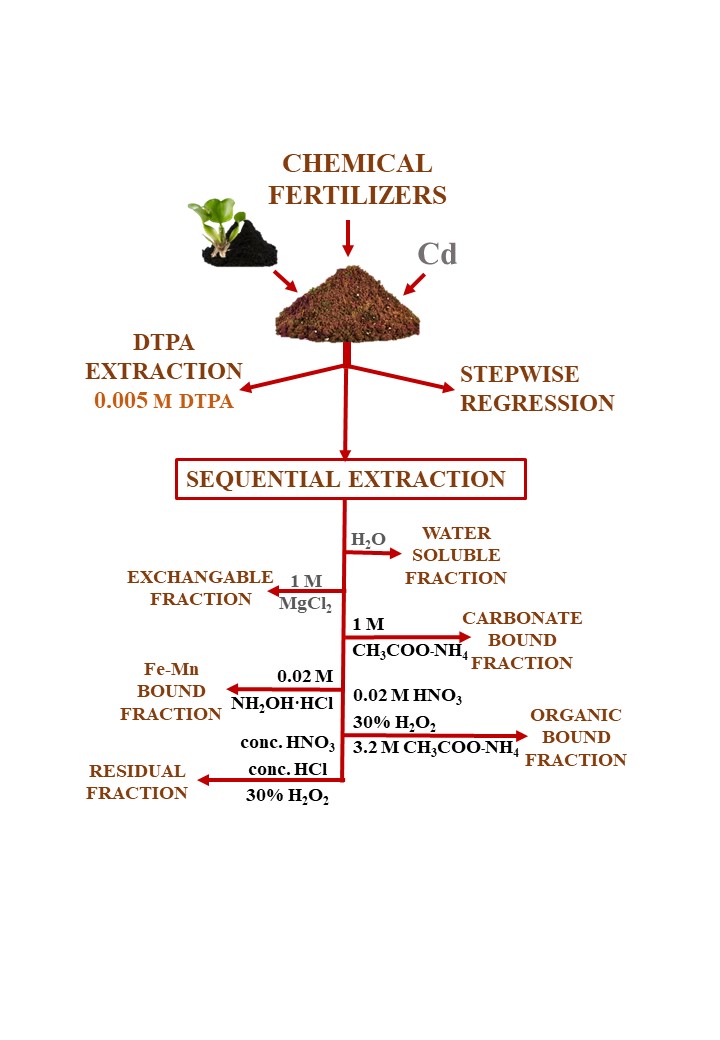The Influence of Chemical Fertilizers on the Effectiveness of Biochar in Mitigating Cadmium Mobility in Soil
Main Article Content
Abstract
The focus of this study was to explore how various fertilizers influence the movement of cadmium in soil treated with biochar. The research utilized a strong acid sandy loam soil from Chanthaburi Province, naturally rich in organic matter with moderate cation exchange capacity and low nitrogen, potassium, phosphorus, sulfate, salinity and chloride levels. The soil was purposely contaminated with 50 mg kg-1 of cadmium and treated with biochar derived from water hyacinth through pyrolysis at 450°C for an hour. This biochar displayed moderate alkalinity, high organic matter, phosphorus, potassium, and cation exchange capacity, but low nitrogen content. Analytical techniques like Scanning Electron Microscopy and Fourier-Transform Infrared Spectroscopy were employed to study the surface characteristics of the biochar. The cadmium adding soil was blended with 10% biochar and various chemical fertilizers at a 0.04% ratio. Diethylenetriamine pentaacetate (DTPA) extraction was used to assess the bioavailability of cadmium to plants in the soil, while sequential extraction was conducted to identify the different forms of cadmium present in the soil. The study revealed distinct effects of different fertilizers on cadmium mobility. Fertilizers like 46-0-0 and 0-3-0 caused a transformation of cadmium from stable to less stable forms, increasing the bioavailability of cadmium to plants. Conversely, fertilizers such as 15-15-15, 0-0-50, 0-0-60, and 0-52-34 shifted cadmium from less stable to more stable forms, resulting in decreased cadmium extracted by DTPA. Other fertilizers showed no significant impact on cadmium mobility in the soil. A stepwise linear regression analysis highlighted that nitrogen content, potassium content, and electrical conductivity were influential factors affecting cadmium mobility.
Article Details

This work is licensed under a Creative Commons Attribution-NonCommercial 4.0 International License.
Published articles are under the copyright of the Applied Environmental Research effective when the article is accepted for publication thus granting Applied Environmental Research all rights for the work so that both parties may be protected from the consequences of unauthorized use. Partially or totally publication of an article elsewhere is possible only after the consent from the editors.

